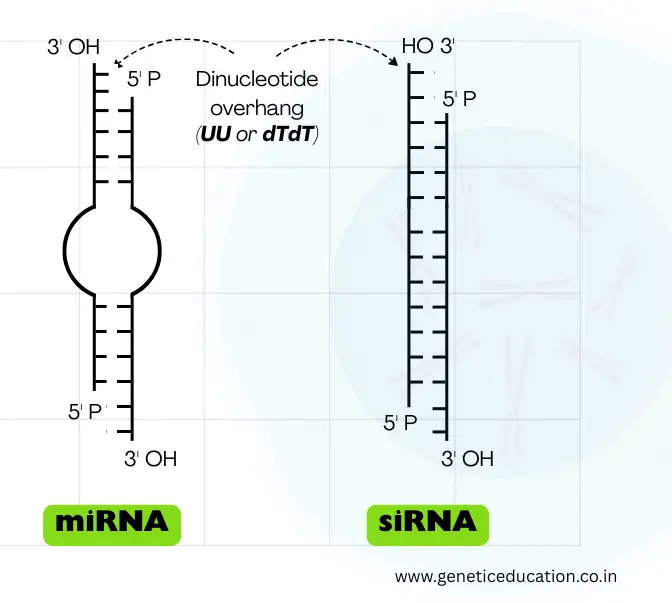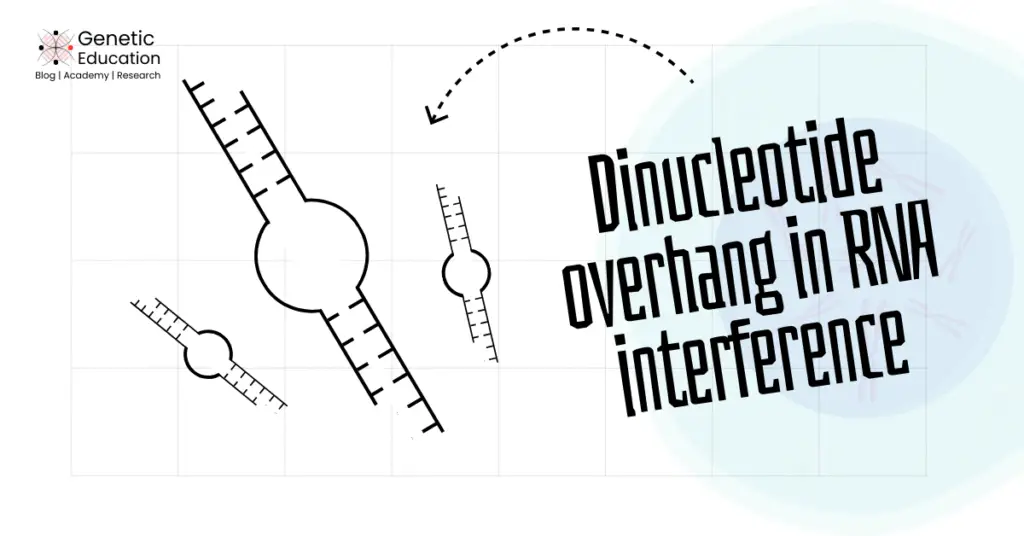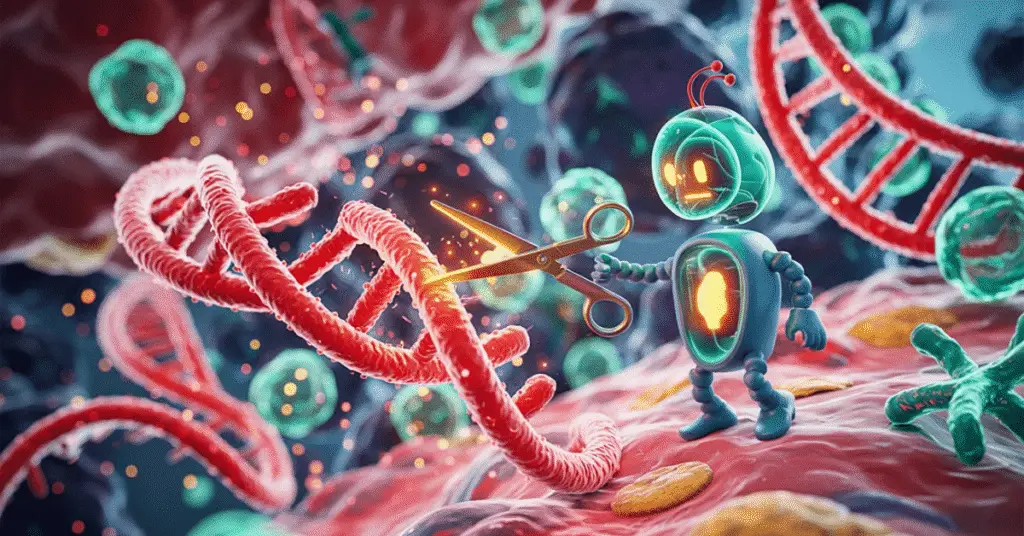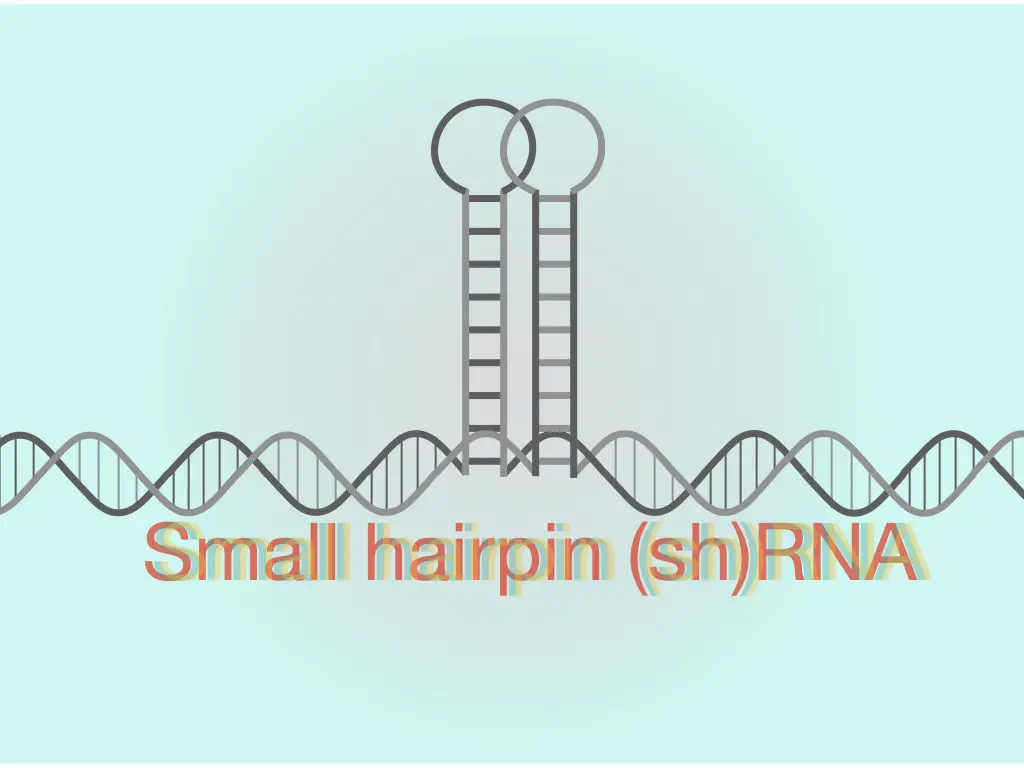“Dinucleotide overhang is a structure that plays an important role in RNA interference. Learn what it is and why it is important, in the present article.”
RNA interference plays a significant role in gene regulation mediated by the smaller non-coding, double-stranded RNAs. Exogenous smaller interfering RNAs and endogenous microRNAs are two common RNA types that belong to this class.
These RNAs do not participate in protein synthesis, rather serve a gene regulation function. It guides the enzyme to the target mRNA and silences it. However, one important structural characteristic gives them this strength.
That’s dinucleotide overhang!
Want to learn about it? In this article, I will explain to you the significance of the dinucleotide overhang in the gene silencing process mediated by RNA interference.
Key Topics:
What is a dinucleotide overhang?
To understand the content present in this article, you need to first understand the process of RNA interference and its steps. I strongly recommend first reading our article on RNA interference. The link is already given.
As the name suggests, the dinucleotide overhang is the unpaired, two-nucleotide block present on the 3’ OH end of the double-stranded RNAs. Usually, these two nucleotides are either ‘UU’ or ‘dTdT (deoxythymidine)’

This unique structure is present in exogenous siRNAs, endogenous miRNAs and shRNAs as well. This signature structural motif is intentionally present in the dsRNA… to perform RNA interference!
How does the overhang form?
The dinucleotide overhang is created by an enzymatic action.
For microRNA, the enzyme Drosha and Dicer collectively prepare the overhang, while for the siRNA, only Dicer processes the double-stranded RNA for creating the dinucleotide overhang.
The dinucleotide overhang on the microRNA is created in two separate steps at two separate locations. Drosha, a class 2 RNase III enzyme, cleaves the primary microRNA at the nucleus and produces a precursor miRNA with an overhang.
Another enzyme, Dicer, which is RNase III, processes the precursor miRNA in the cytoplasm and forms the mature miRNA with a dinucleotide overhang on the 3’ OH.
Noteworthy, during the siRNA processing, only Dicer participates in the formation of the dinucleotide overhang.
Scientists also create artificial siRNA molecules for therapeutic applications. These artificial siRNAs also contain the dinucleotide overhang at both 3’ OH ends. This complete mimicing improves the interference response, thereby therapeutic outcomes.
Importance of the dinucleotide overhang:
Now, the question is, why is this overhang only present at the 3’ ends ,important during the RNA interference process?
This unpaired tail provides stability, molecular recognition and functional loading into the argonaute protein. It has two distinct functions during the RNA interference process.
The argonaute recognizes dinucleotide overhang and incorporates it into the RISC (RNA-Inducing Silencing Complex) and participates in either mRNA degradation or silencing,
This one is the main function of the dinucleotide overhang.
Another function is to choose guided vs the passenger strand. The double-stranded miRNA or siRNA consists of one guide strand and one passenger strand. However, only the guided strand participates in the RNA interference.
The strand with less stable 5’ P end pairing has been selected as a guided strand to process in the RISC.
Research showed that the synthetic siRNA with dinucleotide overhang ‘dTdT’ is least prone to nuclease-mediated degradation. This improves the therapeutic efficiency of siRNA.
Now, why it is prone to degradation?
What happens here, our cells see the double-stranded RNA as a sign of danger, possibly originating from a virus. Our cells activate the immune response and degrade the foreign double-stranded RNA.
But interestingly, it saves several smaller 20 to 25-nucleotide fragments as a recognition molecule. One of these dsRNA strands is used as a guided strand during the next infection cycle.
So while injecting the artificial siRNAs, if a cell gets any sign of the foreign origin, it produces an immune response and destroys it. Scientists have to make an exact copy with a dinucleotide overhang, just like the cell prepares the si or miRNA for processing.
The dinucleotide overhang plays such a crucial role during the RNA interference process that even a 1-nucleotide difference can reduce the RISC or interference efficiency by 50%.
In conclusion, the main functions of the dinucleotide overhang at the 3’ end are,
- To enable efficient loading into the Argonaute protein
- To perform strand selection between the guided and passenger strands.
- To induce viral RNA or mRNA cleavage by RISC.
Now, you can understand how important the dinucleotide overhang is during the RNA interference process.
Wrapping up:
2024’s Nobel Prize for microRNA discovery has opened new avenues in our understanding of gene regulation. And strengthen our epigenetic knowledge.
The use of artificial siRNA holds immense potential in revolutionizing cancer research and treatment. However, the major hurdle remains: effectively delivering siRNA!
Unlike viruses, which have a well-established mechanism for delivering their genetic material, our current delivery systems fall short.
Still, the future holds hope. This technique will help humans control their genes. But remember, our understanding of dinucleotide overhang remains an important foundation for designing effective gene silencing tools.
I hope you like this article. Do share and subscribe to Genetic Education.
Resources:
Elbashir, S., Harborth, J., Lendeckel, W. et al. Duplexes of 21-nucleotide RNAs mediate RNA interference in cultured mammalian cells. Nature 411, 494–498 (2001). https://doi.org/10.1038/35078107.
Macrae IJ, Zhou K, Li F, et al. Structural basis for double-stranded RNA processing by Dicer. Science. 2006;311(5758):195-198. doi:10.1126/science.1121638.
Ding SW, Voinnet O. Antiviral immunity directed by small RNAs. Cell. 2007;130(3):413-426. doi:10.1016/j.cell.2007.07.039.


